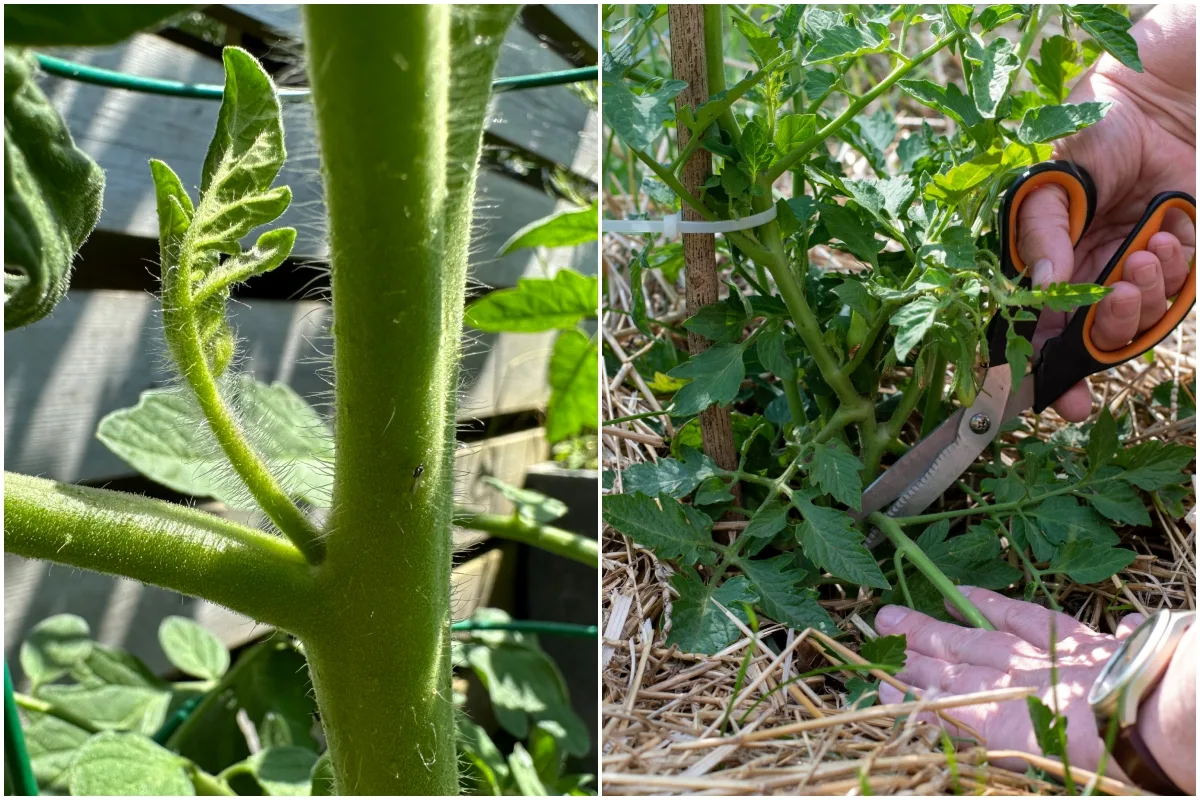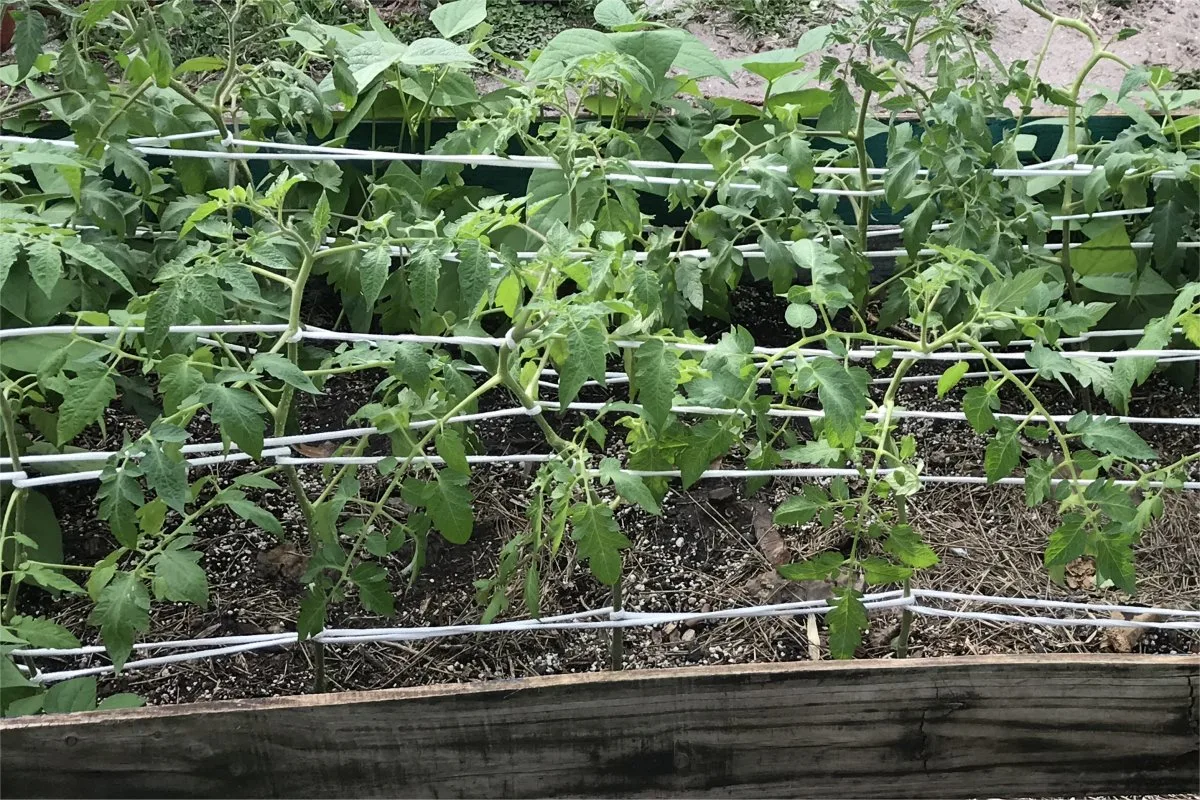
Tomato cages are the cruelest punk on home gardeners. They’re never tall enough and always seem to fall apart as soon as the branches get unwieldy and the fruit gets heavy — you know, just when you need them most.
That’s why I use the Florida Weave.
Tomato cages are overpriced too. A quick survey of my local home improvement store’s website quotes me anywhere between $7 to $15 each for a support cage between 42 to 54 inches tall.
So, great for little patio tomatoes, but pretty useless for any other kind.
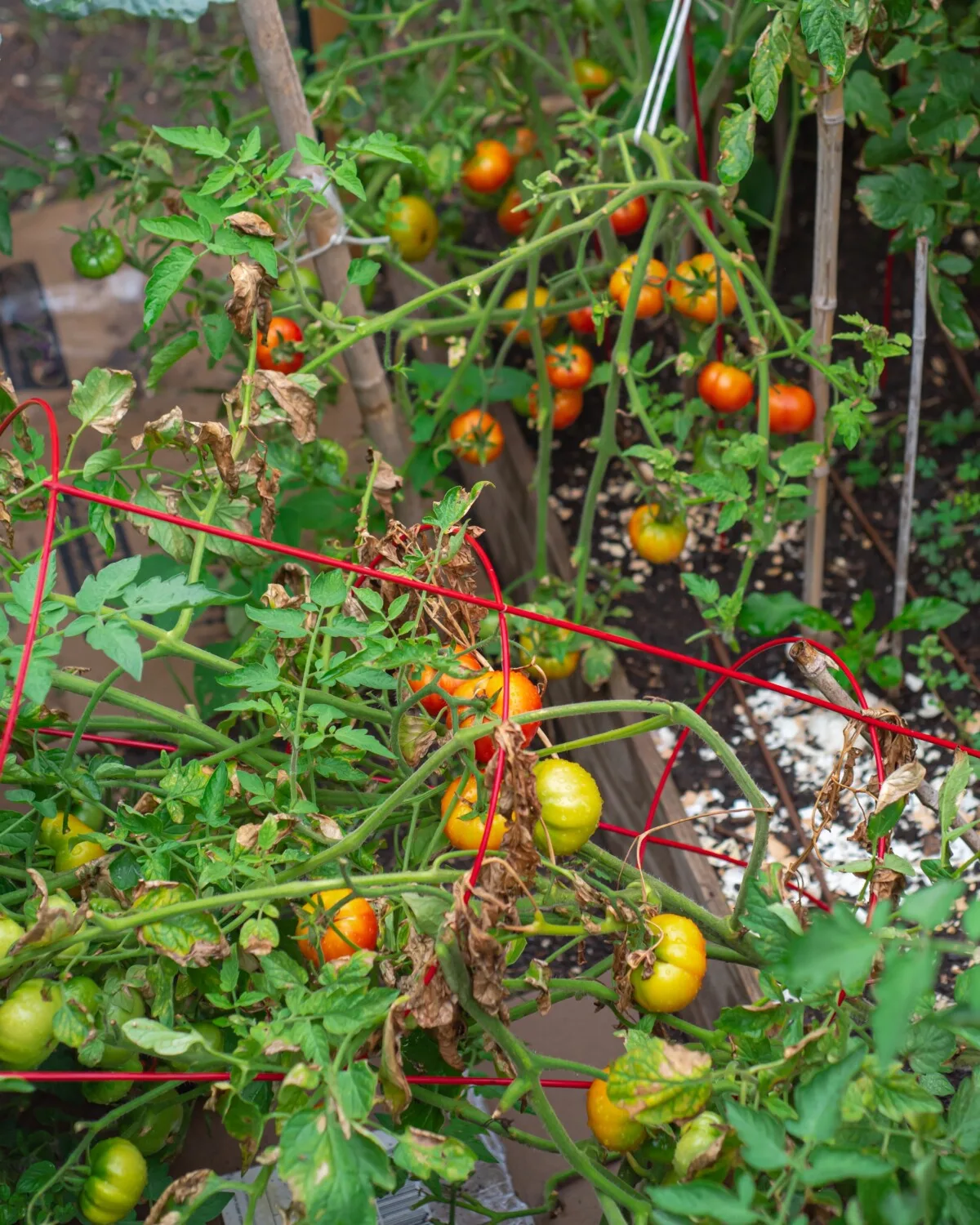
And what if you grow a lot of tomatoes? If you’re like me, you plant at least a dozen paste tomatoes for sauce or canning. Who wants to spend that much money on supports that aren’t big enough to finish the job? Not me.
Enter the Florida Weave — a fast, cheap and easy way to support tomato plants.
What in the Heck is a Florida Weave?
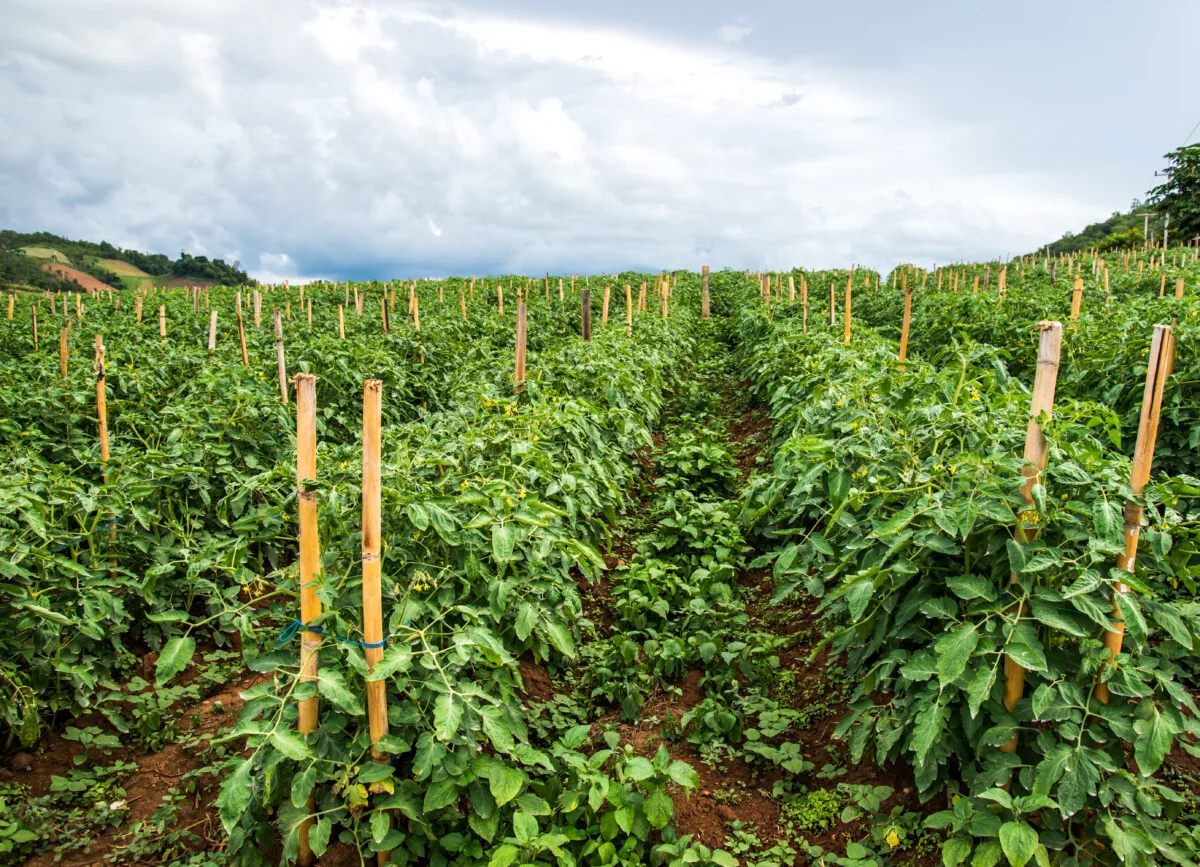
If you google “Florida Weave,” you may get some confusing search results about fistfights or hair products. After all … it is Florida.
But not everyone in our state is as whacky as we may sound. Most of us, especially in the more rural areas, are diligently working hard to grow food.
Because of the heat, the bugs, and the rainy weather, we’re always looking for shortcuts. Anything that gets us back into the air conditioning (or at least into the shade) as soon as possible.
A Florida Weave trellis uses string, twine, or rope to create a horizontal trellis to support the plants on both sides.
Using stakes or posts on both sides of a row of tomato plants, you weave twine through and around the plants, securing it at each side. As the plant grows, you weave another level of line through the plants until they reach their mature height.
Why Use a Florida Weave Tomato Trellis
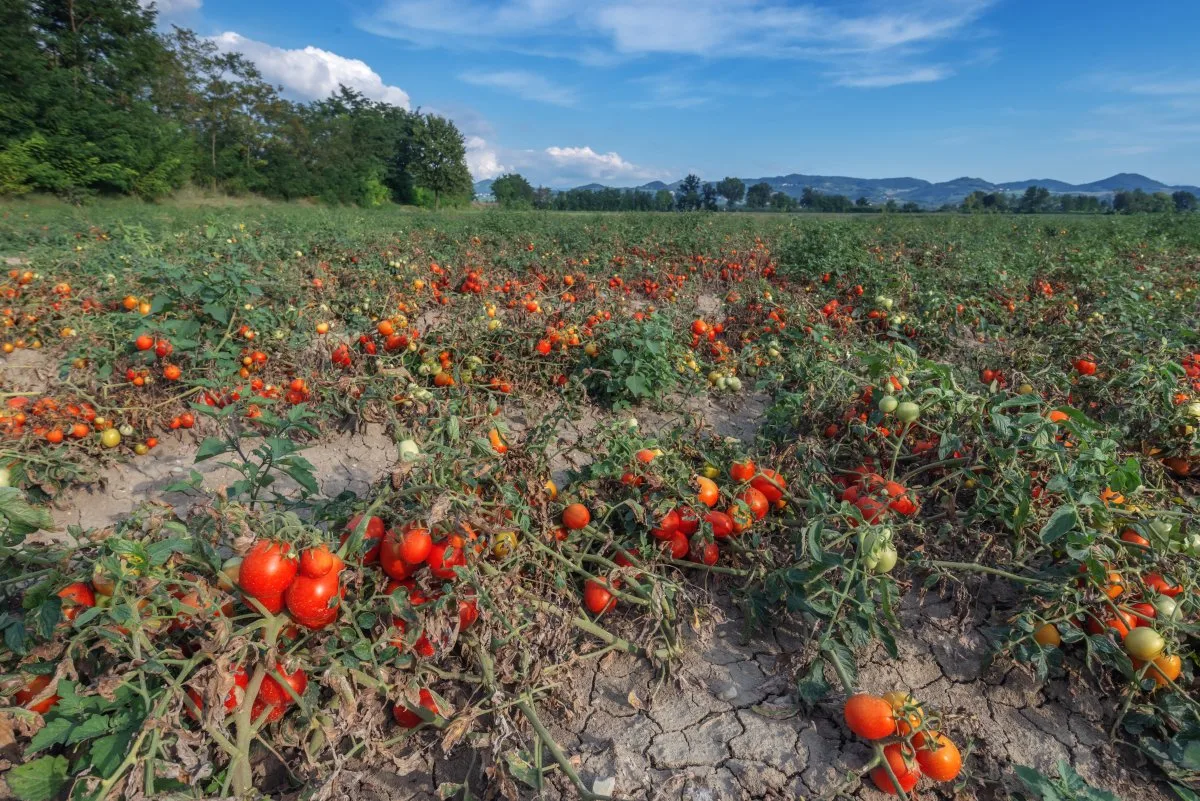
In the wild, tomatoes like to sprawl over the ground. They’re not natural climbers at all. The problem with letting them sprawl is the tomatoes quickly pick up bugs, dirt, and disease.
I lost track of some tomato vines last fall and they ended up splayed out on the mulch. I decided to see what would happen.
What happened is that 90% of them became chicken food.
The Florida Weave, sometimes called the “Basket Weave,” lets you quickly tie up multiple tomato plants with less time and fewer materials. This keeps the plants healthy and your precious fruits from rotting.
All it takes is a few tall stakes and some sturdy twine.
When To Use a Florida Weave Tomato Trellis
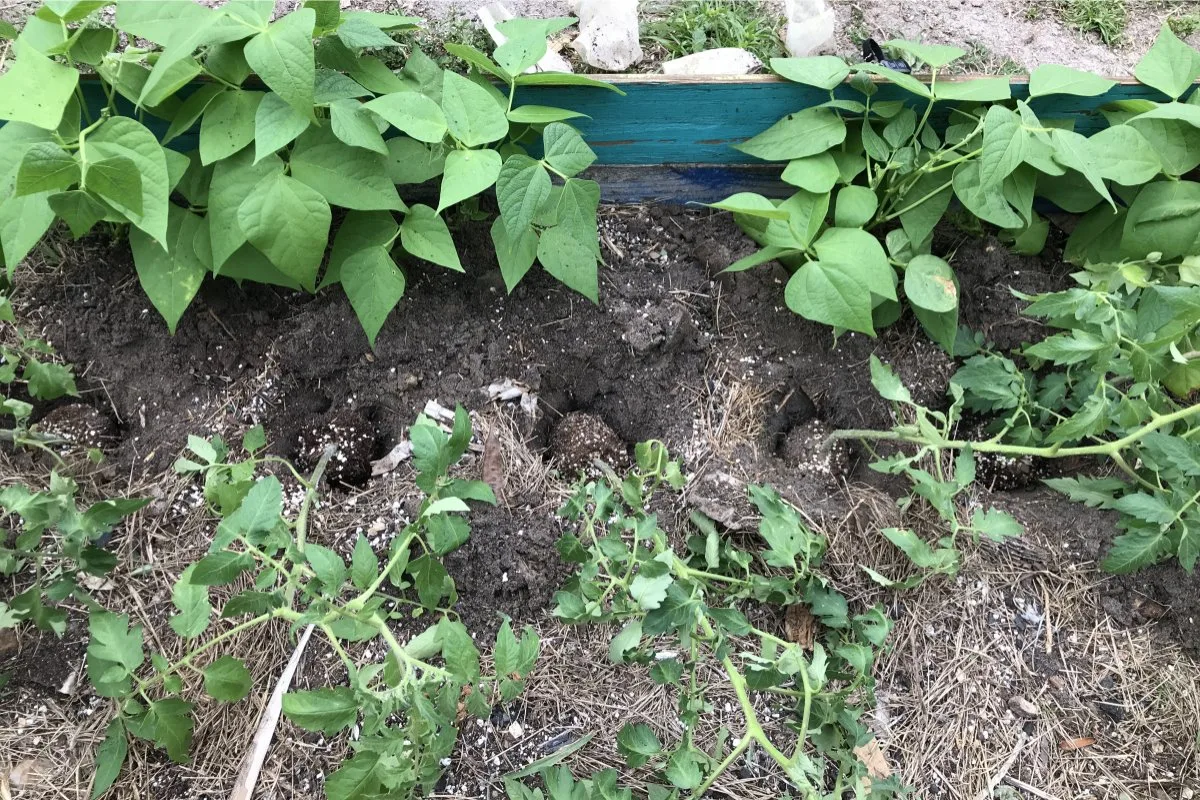
The Florida Weave tomato trellis is perfect for determinate tomatoes. Large-scale farmers often prefer determinate varieties for the convenience in supporting and harvesting.
Determinate tomatoes rarely grow over 4 or 5 feet tall. So, farmers can grow them in a field setting without expensive trellising.
Determinate tomatoes produce all their fruit at once — or at least all within a few weeks’ time. They’re not exactly a “one and done” crop, but if you’re hiring in help for the harvest, you want a quick turnover.
You can use a Florida Weave trellis on indeterminate varieties, as well, if you use tall enough stakes.
Why I Use a Florida Weave
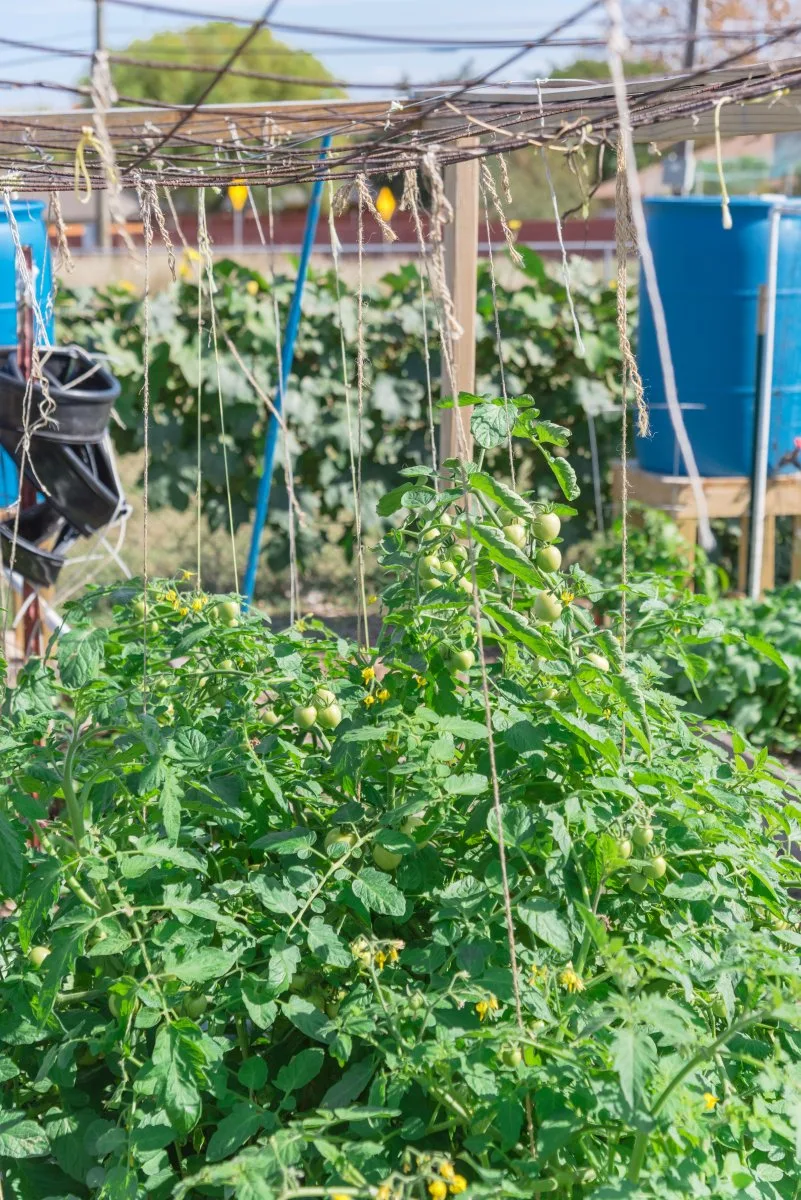
As a relatively short person with an aversion to dragging a ladder around the yard, I prefer determinate tomatoes. Spending hours in the sun working overhead to trellis indeterminate tomatoes is not my idea of a fun time in the garden.
The infrastructure for trellising can be expensive too, and the process is exhausting.
Besides, we have two tomato growing seasons a year — fall and spring. These are interrupted by a few sudden frosty nights in December and January.
Have you ever tried to cover a 9-foot-tall tomato trellis with a frost blanket?
I have. It was … a learning experience.
I learned to stick to determinate tomatoes.
Short, compact, and no pruning required — determinate tomatoes are perfect for subtropical climates. When planted in the fall, they grow and fruit before the occasional frost in winter. When planted in late winter, they grow and fruit before the heat and humidity of early summer.
How I Use the Florida Weave
My favorite part of this hack is the materials I’ve discovered make doing a Florida Weave trellis even easier than ever.
Step-In Electric Fence Posts
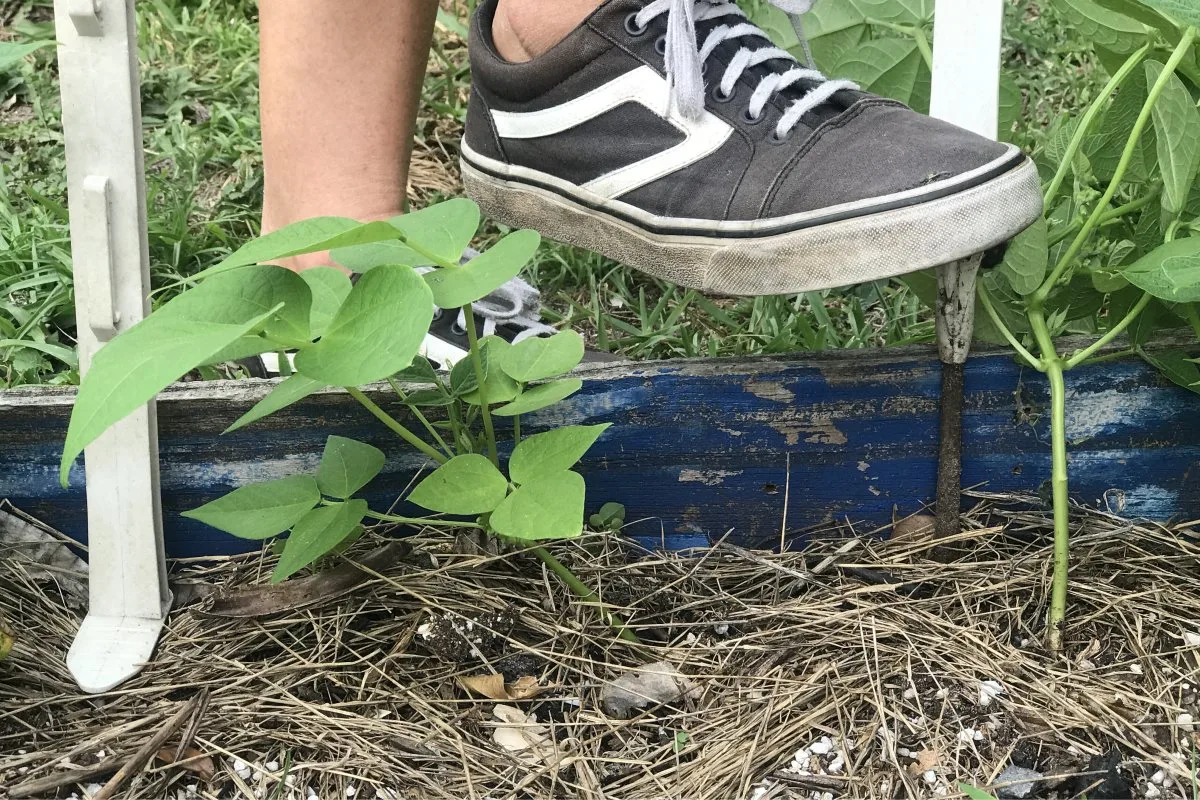
These plastic or fiberglass fence posts were designed for moveable electric fencing. The material isn’t conductive, which makes them safe for powered fences. However, because they’re meant for a portable system, you can move them easily and install them in seconds.
You’ll find them in 4-foot lengths for less than $3 each at your local feed store. These handy posts feature long, slightly sharpened metal stakes at the bottom.
A flange above the stake allows you to easily push the post into the ground with your foot. No digging required.
They’re very light to carry around, and they’ll last for years. They feature clips along the length of the post where you can secure wires or strings.
Step-in fence posts are so easy to install and remove, I can’t imagine gardening without them at this point.
They’re the perfect height for most determinate tomato varieties, as well as eggplant and pepper plants.
T-Posts
For indeterminate tomato varieties, you’ll need T-posts. These steel posts come in heavy-duty or light-duty, and you’ll find them in 5, 6, 7, and 8-foot lengths. These are for regular fencing, and although they’re a bit harder to install, they’re even more durable. And of course, they’re a lot taller.
Don’t let that stop you, though. I’ve found I can step in the light-duty T-posts with my foot on the anchor plate if the ground is loose enough. The heavy-duty ones will slide into the uncompacted soil with a few taps from a mallet.
T-posts feature clips along the length to help you distribute your line evenly and secure it in place.
Laundry Line
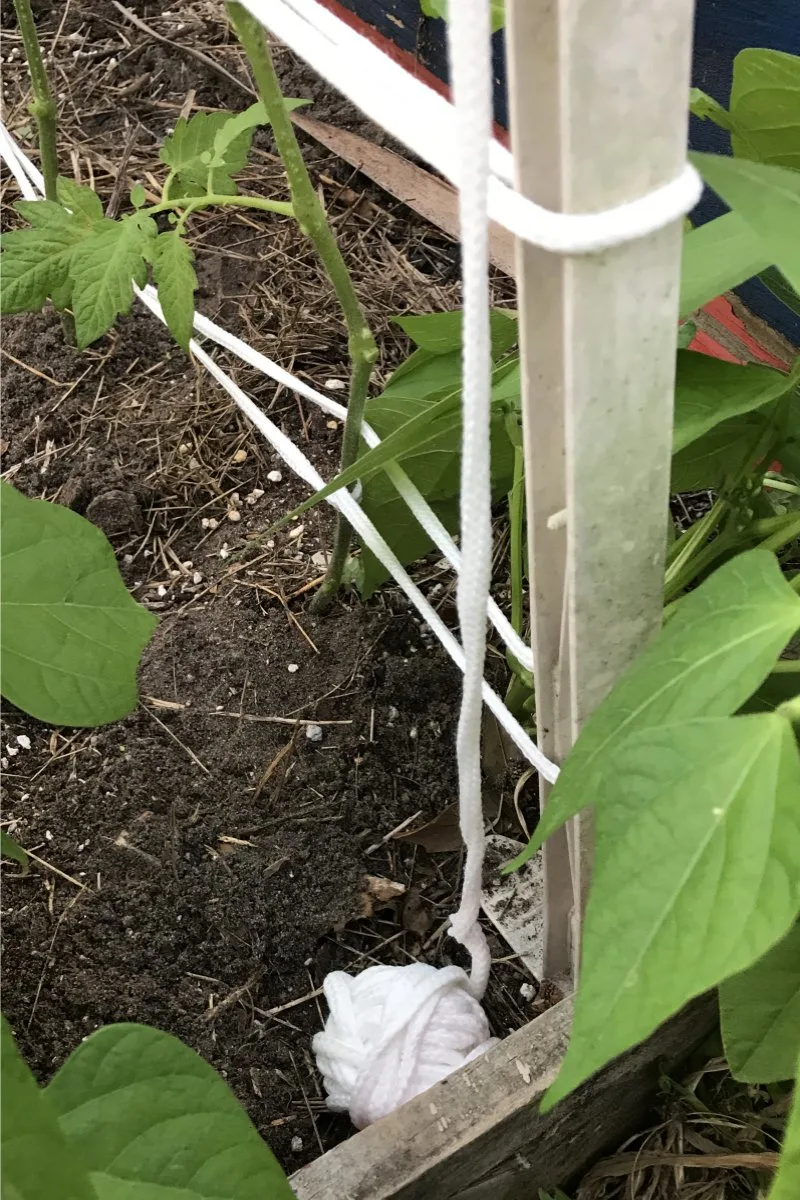
Some gardening experts recommend baling twine or some other non-elastic string for making a Florida Weave trellis.
I use laundry line. It’s soft and slightly elastic. The all-cotton type is superior, but the polyester weave is fine, too.
We live very near the coast, and our gusty weather (especially in the early spring) requires the tomatoes to have some room to move a bit in their supports.
Twine can be rough and abrade the stems, damaging the plants and cutting through the branches when it’s excessively windy.
Another reason I prefer the more forgiving laundry line over twine is so I can wrap it fully around the stem if it needs to be more secure.
How to Make a Florida Weave Trellis
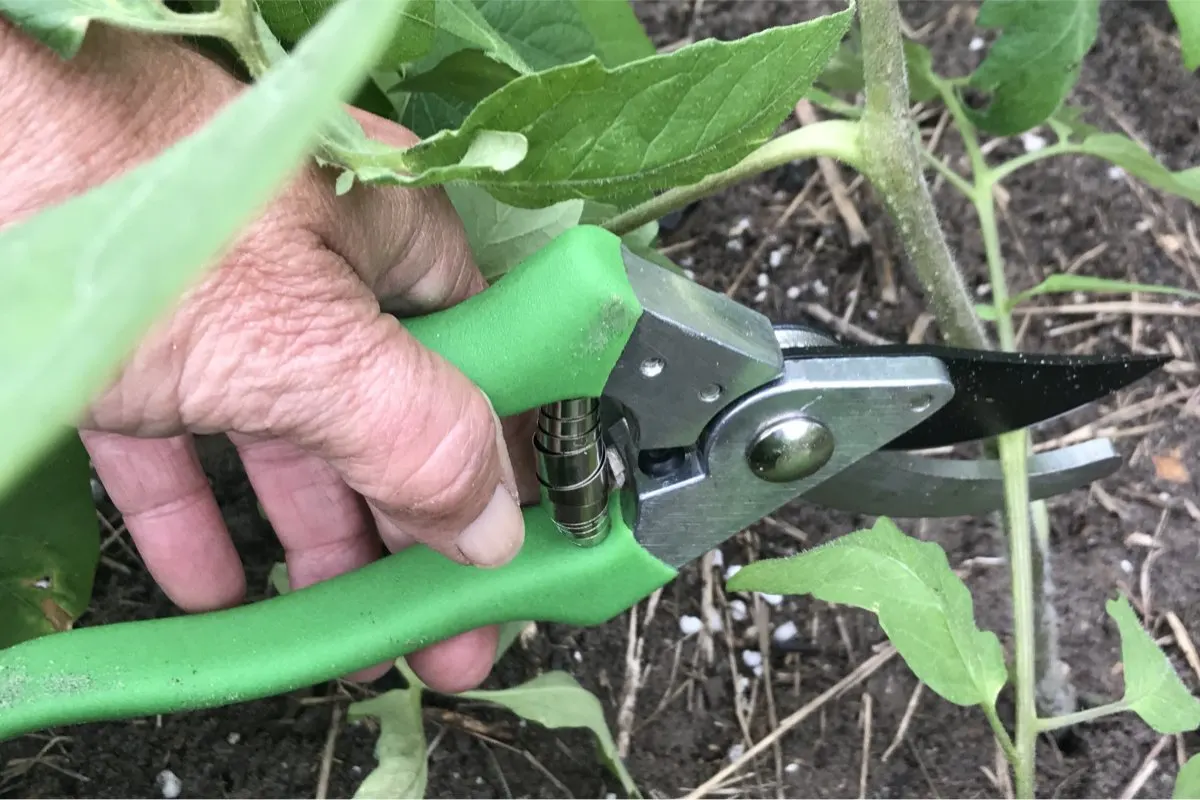
The best time to install your Florida Weave Trellis is when the plants are about 1 to 2 feet tall. You can add more line as they grow, but it works best if they’re tall enough for three levels of line to start.
Before starting the weave, I take a few minutes to remove any leaves from the bottom 8 inches of the plants. This reduces the spread of soil-borne disease and makes it easier to start the weaving process.
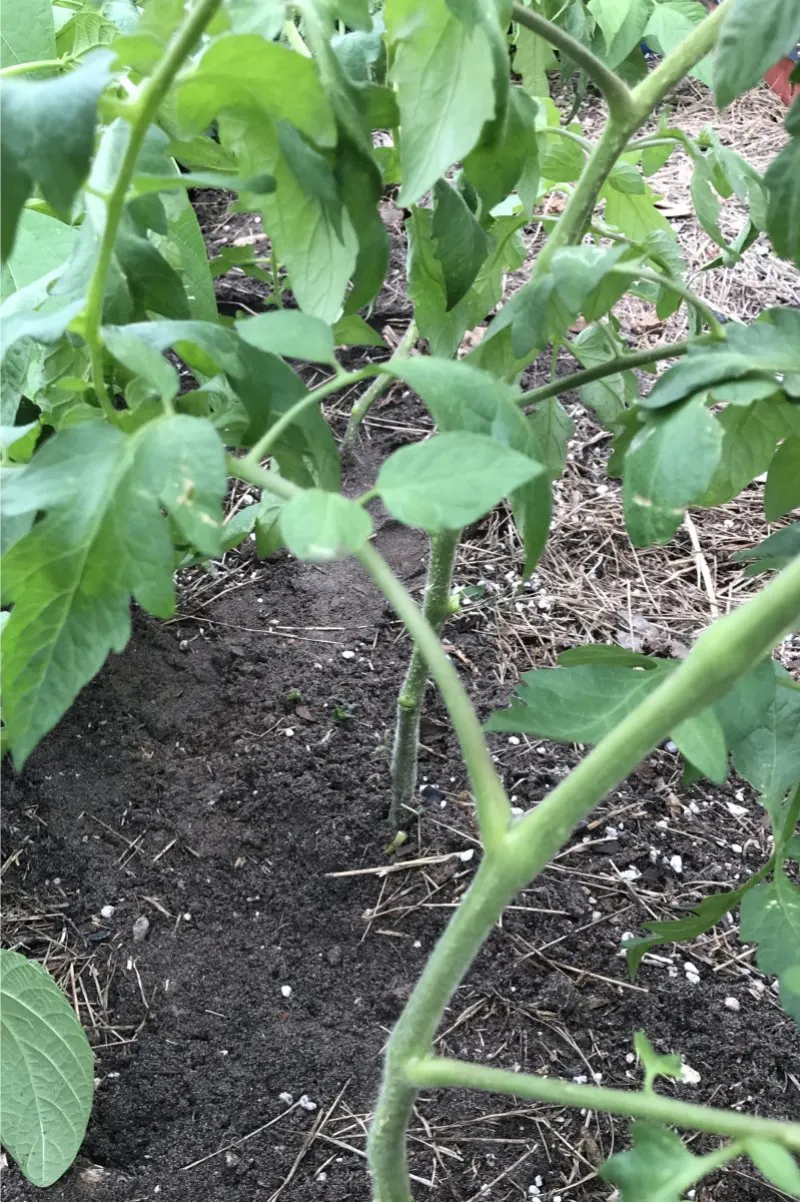
Install your posts at each end of the tomato row, and make sure they’re securely driven into the ground.
You will need one post at the end of each row. Some gardening experts recommend installing a stake between every two plants. I’ve found the Weave works fine up to 6 feet. You can install extra posts as needed for longer rows.
I’ve also seen some gardeners recommend using one stake per plant, which to me negates the whole point of using the weave.
In my experience, installing the posts with the clips to the outside of the row works best for achieving adequate tension in the line.
Start at one end of the row, about 6 inches above the ground, and tie the twine to the first stake.
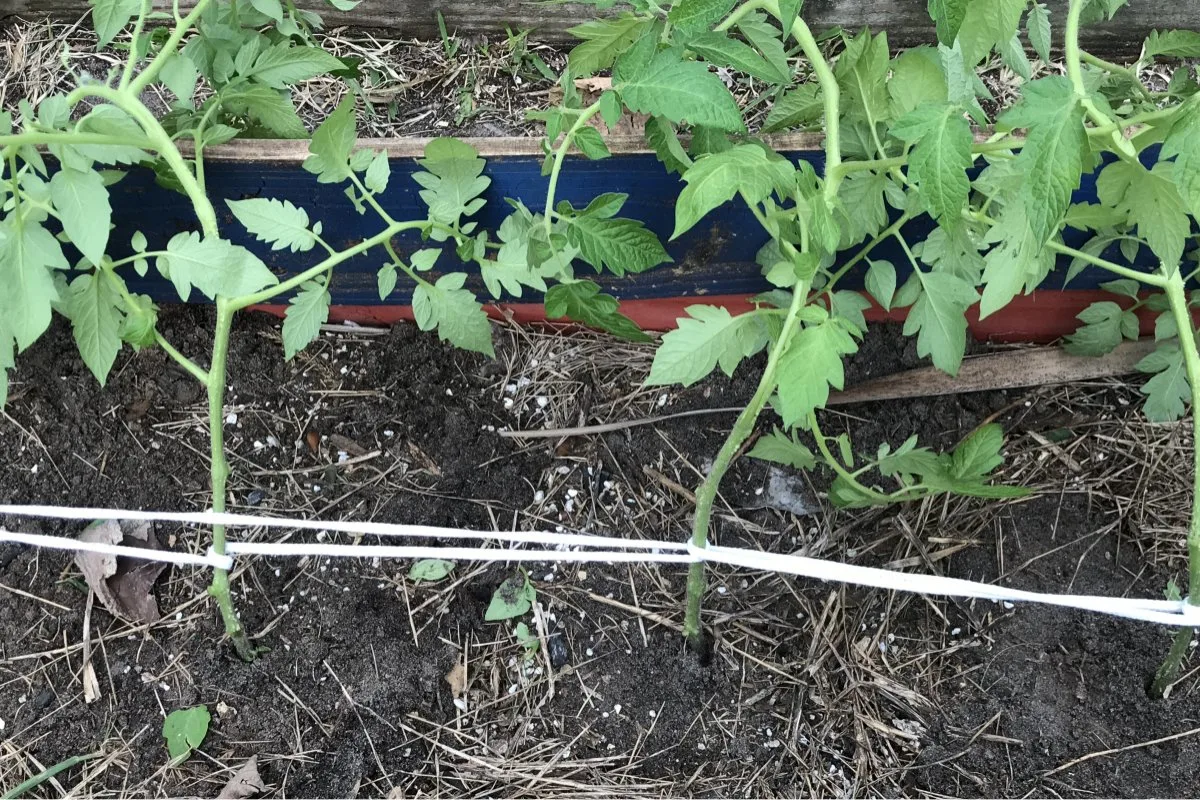
Weaving the First Layer
First, weave the twine around the tomato plants, alternating sides with each plant. Starting at one end, you’ll weave the line in a figure-eight pattern between the plants.
As you weave, gently push the tomato plants towards the twine to provide support. This is where I sometimes wrap it around the stems to keep them straight, if necessary.
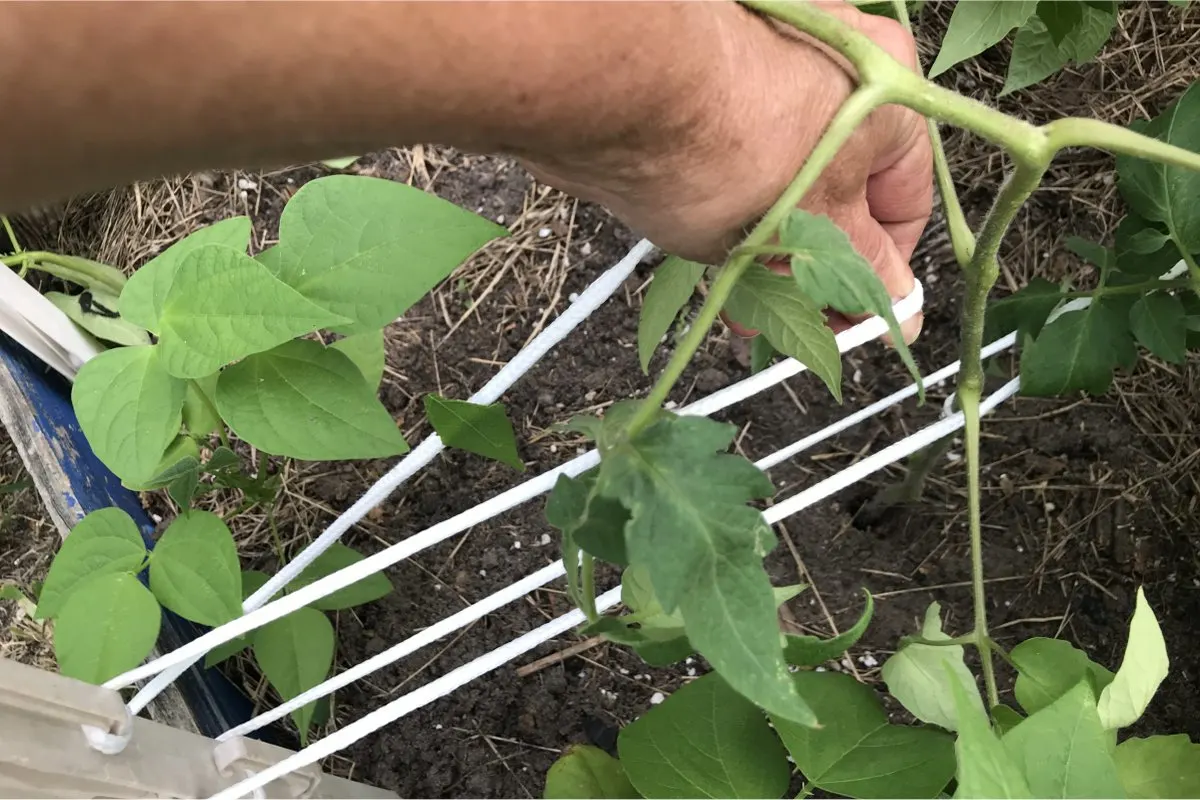
Your goal is to weave the line in and around the plant stems, supporting them on each side at every layer.
At the end of the row, tie off the twine securely to the last fence or T-post.
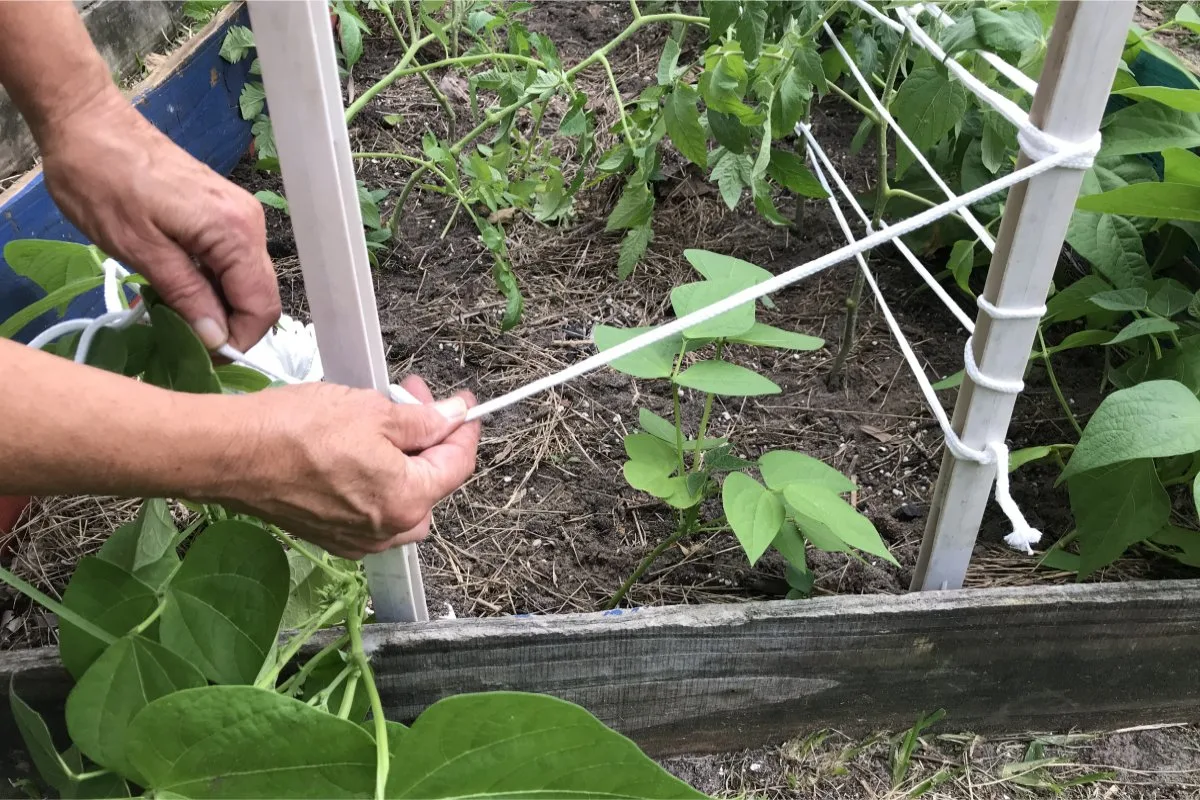
Next, tighten the line as necessary to provide support. I find winding any slack around the clips on the fence posts is easiest for adding more tension to the line.
You want to install three levels of line to start. This ensures they grow straight and have adequate support.
Maintain and Adjust Your Trellis

Check the tension of the twine regularly and adjust it as needed to support the growing tomato plants.
As the tomato plants grow, add more levels of line, securing each into place on each post.
Depending on the height of the plants, space new levels at 6-8 inches above the previous one.
Removing Your Trellis
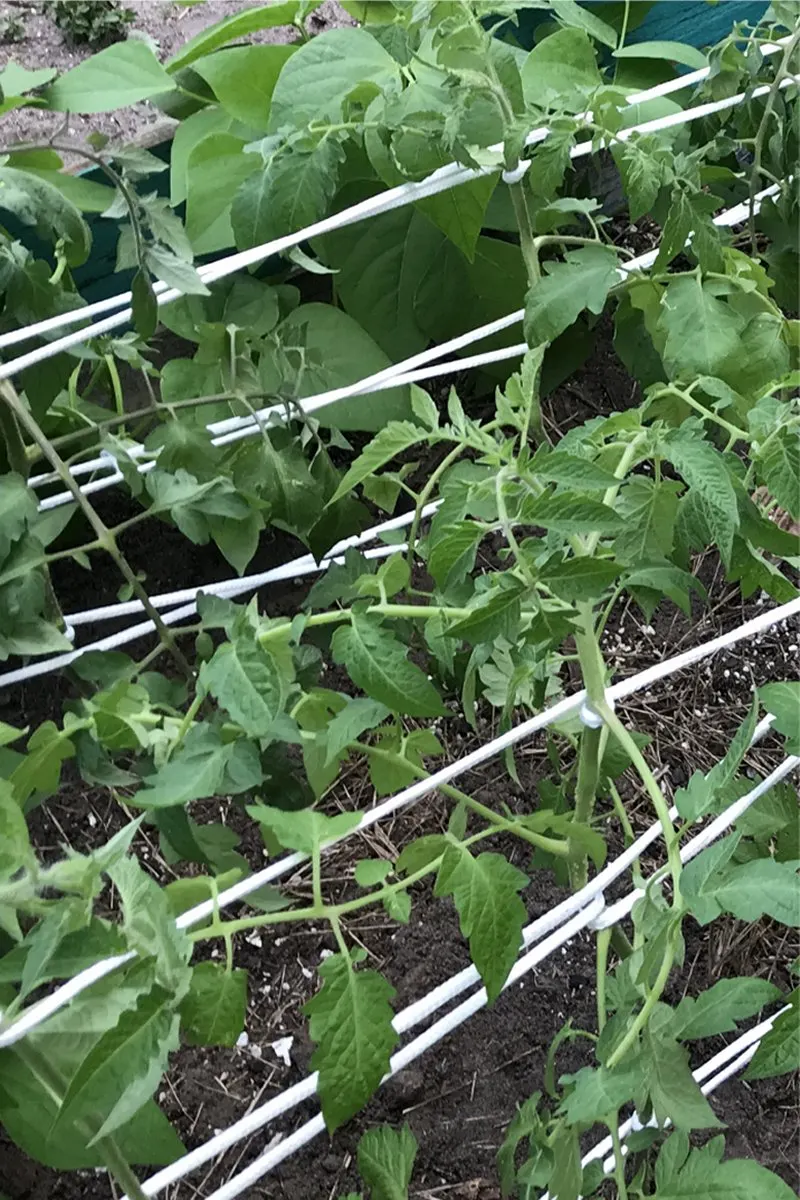
At the end of the growing season, you can disassemble the trellis by unwinding the laundry line. This is one reason all-cotton laundry line is superior. If you’re as impatient as I am, you can cut it off and put it in the compost pile with the spent plants.
On the other hand, if you have the time to unwind it, you can reuse polyester line elsewhere.
A sturdy tomato trellis promotes good air circulation and makes harvesting easier. When you’re growing a large number of tomato plants, the Florida Weave will save you time and money. With just a few materials and no special skills required, it offers excellent plant support.
Remember, you’ll need to adjust it and add levels as the plants grow, but overall, it’s a simple and effective way to support your tomato crop.
Read Next:

Get the famous Rural Sprout newsletter delivered to your inbox.
Including Sunday ramblings from our editor, Tracey, as well as “What’s Up Wednesday” our roundup of what’s in season and new article updates and alerts.


